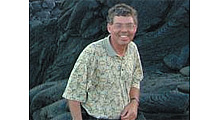NAB Cautions Against OET-69 Code Changes

Doug Lung
The National Association of Broadcasters, in comments to the FCC this week, expressed “serious reservations” with the commission's updates to OET-69.
Responding to the FCC's OET Public Notice DA 13-138 released, Feb. 4, the NAB filed a Notice of Ex Parte Communication in which it said that the incentive auction proceeding "is not the time or place to make this suite of proposed changes. Quite simply, the Commission does not have the time or resources for it to be a thorough and useful exercise when there are countless more pressing issues that must be resolved before the auction commences.”
One of the areas NAB highlighted in their meeting with FCC staff was how ‘flagged’ cells are treated in OET-69, which NAB said could affect the coverage area and population served for some stations by as much as 25 to 30 percent.
The NAB stated, “The plan to change the treatment of these areas can only be described as a change in methodology, and thus a strong case could be made that they violate the express language in the Spectrum Act.
“Furthermore, one of the same changes proposed in the Public Notice—regarding 'flagged cells'—has been addressed twice previously by the Commission and rejected both times.”
The NAB said that it did not disagree on the value of doing a “thorough review” of OET-69 “sometime in the future,” but stated that “such a reexamination is not appropriate--even beyond the statutory and administrative law barriers--in the middle of an extremely complex proceeding in its own right. Whereas prior to the Public Notice, broadcasters understood how their coverage area and population served would be calculated in the auction, as a result of these changes, no broadcaster could know what it would be auctioning or preserving. The changes could yield a greater protected area for some and less for others.”
I covered the proposed changes to OET-69 last week in FCC OET-69 Update Appears Promising. While the updates improve accuracy, I was concerned that incomplete data on stations' actual antenna patterns in the FCC CDBS would compromise the results. If stations using mechanical beam tilt don't have an opportunity to provide additional antenna pattern data to allow accurate coverage predictions instead of the bogus results from using the OET-69 elevation patterns and horizontal plane radiation patterns that bear no reality to the signal on the ground, why bother?
The OET-69 depression angle calculation error actually offsets the errors created by using the standard elevation pattern when stations are high above the areas they serve. If the depression angle error was fixed and accurate elevation patterns were not used, a station's signal strength could be artificially reduced. As NAB implies, fixing OET-69 will be complicated.
I’m concerned that in the repacking proposal the current treatment of “flagged” cells will allow the FCC to create real interference to existing TV signals in the “flagged” cells without the interference ever showing up as a reduction in coverage. I'm also concerned that the current OET-69 software doesn’t allow the FCC to protect stations’ current coverage down to the cell level. This is going to be essential in maintaining coverage to existing viewers. If it isn't possible to resolve all the OET-69 issues--given the limited technical data available in CDBS--perhaps some of the more important points raised in the Public Notice could be addressed without significantly changing a station's existing FCC coverage, bogus or not. I'm also encouraged the FCC has updated the software to run on a variety of operating systems, allowing anyone willing to take the time to analyze the impact of repacking decisions. That's going to be important.
Get the TV Tech Newsletter
The professional video industry's #1 source for news, trends and product and tech information. Sign up below.

Doug Lung is one of America's foremost authorities on broadcast RF technology. As vice president of Broadcast Technology for NBCUniversal Local, H. Douglas Lung leads NBC and Telemundo-owned stations’ RF and transmission affairs, including microwave, radars, satellite uplinks, and FCC technical filings. Beginning his career in 1976 at KSCI in Los Angeles, Lung has nearly 50 years of experience in broadcast television engineering. Beginning in 1985, he led the engineering department for what was to become the Telemundo network and station group, assisting in the design, construction and installation of the company’s broadcast and cable facilities. Other projects include work on the launch of Hawaii’s first UHF TV station, the rollout and testing of the ATSC mobile-handheld standard, and software development related to the incentive auction TV spectrum repack. A longtime columnist for TV Technology, Doug is also a regular contributor to IEEE Broadcast Technology. He is the recipient of the 2023 NAB Television Engineering Award. He also received a Tech Leadership Award from TV Tech publisher Future plc in 2021 and is a member of the IEEE Broadcast Technology Society and the Society of Broadcast Engineers.
